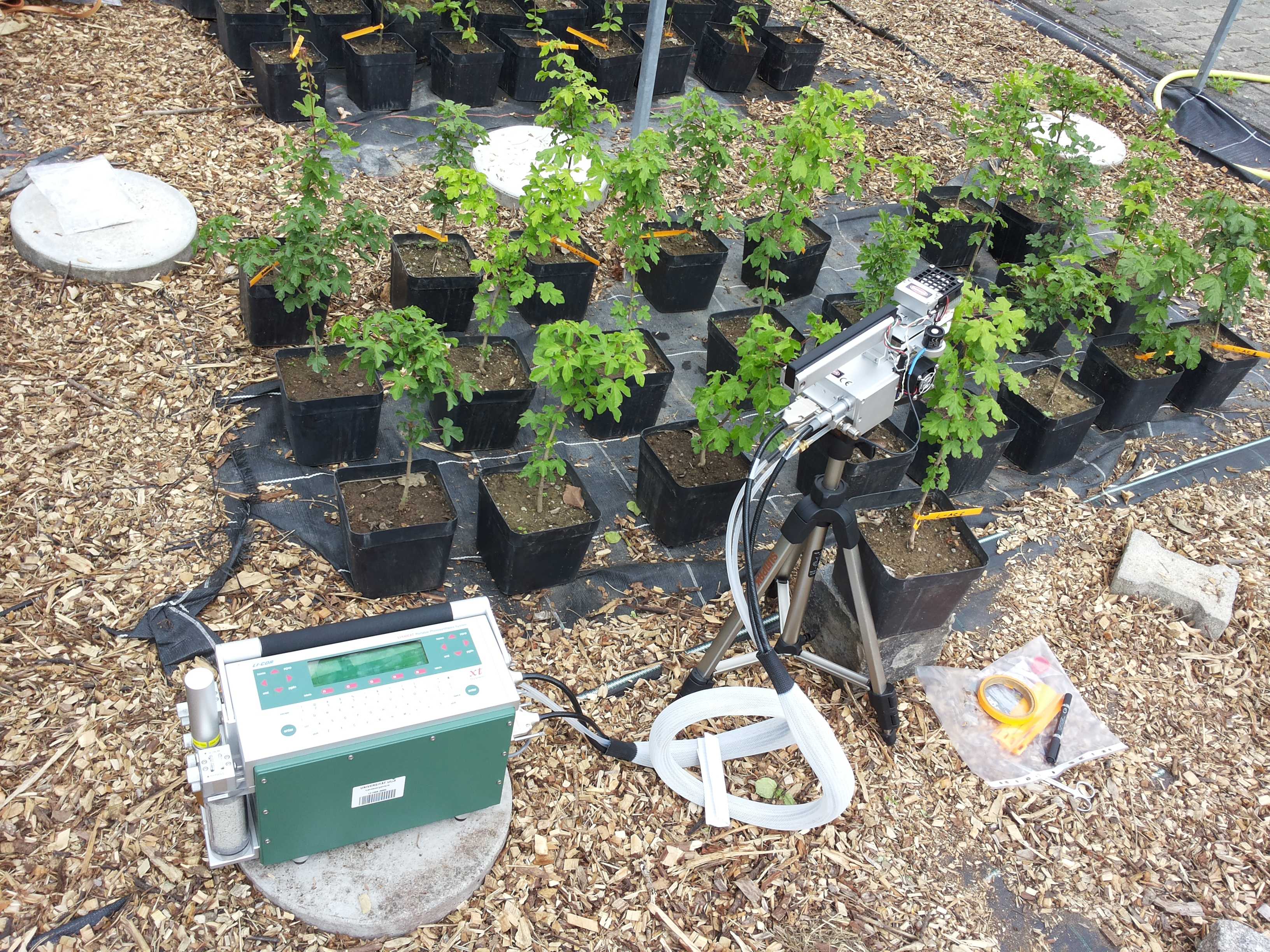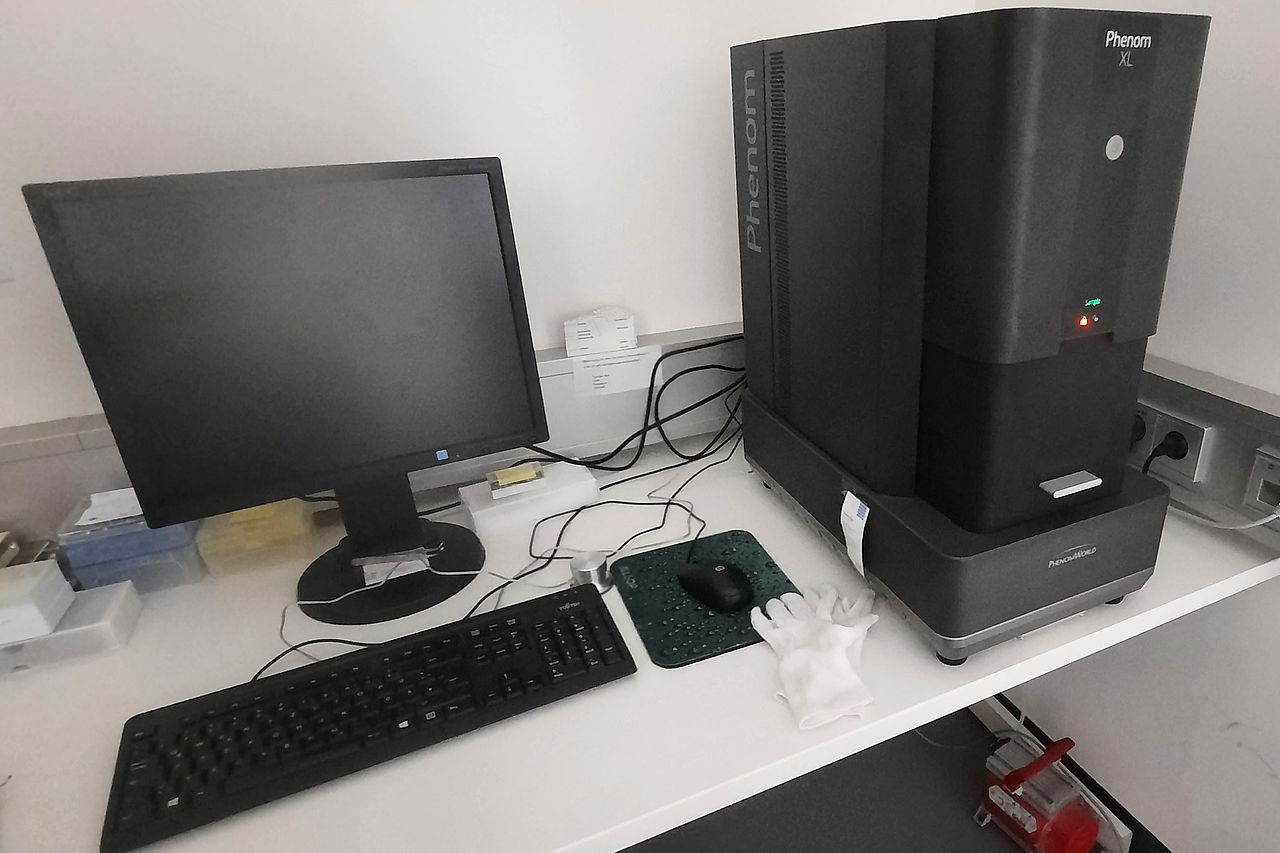Scientific equipment
This is a list of the scientific equipment that can be found in the institute. We are always open to cooperations. If you need any of our equipment for your research please contact the secretary.
Analytic equipment
Microwave-plasma atomic emission spectrometry (Agilent 4100)
With the MP-AES we quantify elemental concentrations in various samples (plant tissues, waste-water, sludge, etc.). After microwave digestion, the sample is sprayed into a microwave induced nitrogen-plasma. The analyte subsequently emits element-specific radiation, which is proportional to the concentration of the element.
C/N determinator (LECO TruSpec CN Macro)
The TruSpec Macro utilizes a combination of flow-through carrier gas and individual, highly selective infrared and thermal conductivity detectors resulting in simultaneous determination of C and N in less than four minutes. Sample sizes can be up to 1.5 g.
Calorimeter (IKA Calorimeter C7000)
The IKA® calorimeter C 7000 has a completely dry system for measuring the gross calorific value of solid and liquid samples. The temperature is measured directly in the decomposition system. This results in measurement times in the range of 3 to 7 minutes. The system can manage up to 8 different decomposition vessels using a code ring scheme.
Microwave digestion system (CEM MARSXpress)
High-pressure microwave digestion is used to digest plant or soil samples in nitric acid or other agents. The liquid samples can then be analysed at our MP-AES.
Photometer (PERKIN-ELMER UV/VIS-Spectrophotometer)
By UV and visible light transmission photometry a measurement of the absorption of light of a given wavelength of coloured substances in solution is performed. From the light absorption, Lambert-Beer's law makes it possible to calculate the concentration of the coloured substance in the solution. We use this instrument, for instance, to determine the content of phosphorous in soil or plant samples.
Chromatography
Gas chromatography (PerkinElmer Clarus 580)
Our gas chromatograph has two split/splitless injectors, one FID detector for carbon compounds and one PND detector for phosphorous and nitrogen compounds. The autosampler has a capacity of 108 samples. We use this instrument, for instance, to determine the content of fatty acids in water samples or sludge samples from biogas reactors.
Ion chromatography (Metrohm 792 Basic IC)
In the Metrohm 792 Basic IC, a sample is introduced manually into a 20 µl sample loop. A buffered aqueous solution (mobile phase) carries the sample from the loop onto a column (stationary phase). The target anions (fluoride, chloride, nitrite, nitrate, and sulphate) are first retained on the stationary phase but then eluted separately in time. The analytes of interest will then be detected by electric conductivity.
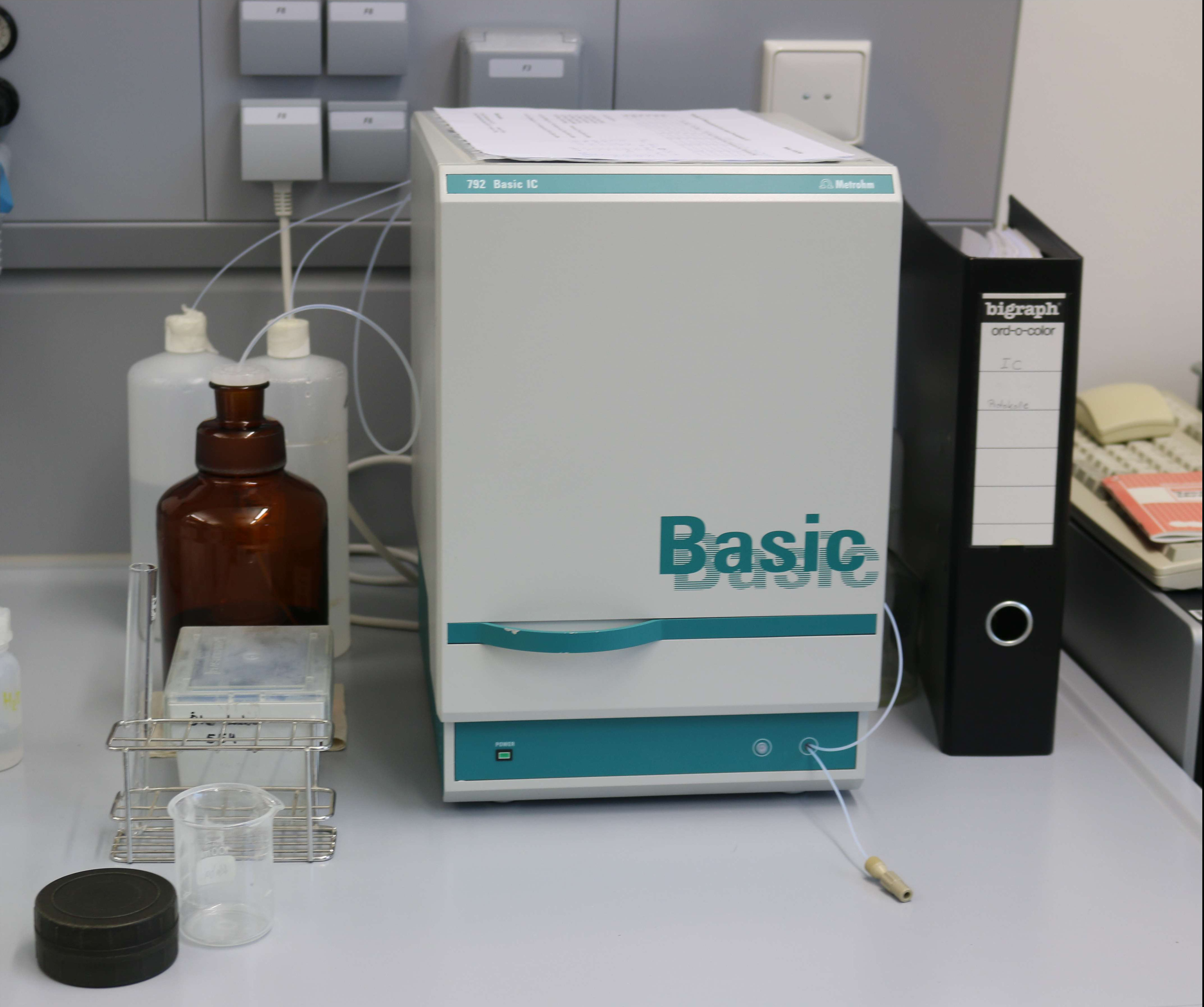
Histology
Hydraulics
Portable Photosynthesis and Fluorescence System (LI-6400XT)
The LI-6400XT Portable Photosynthesis and Fluorescence System is designed to measure ecophysiological indicators of plants, e.g. photosynthesis rate, transpiration rate and stomatal conductance. Red & blue LED light source provides certain light intensity for environmental controlled experiments. Furthermore, CO2 and light response curves can be obtained by this device. Chlorophyll fluorescence, which is an important indicator for stressed plants, can be measured by using the Leaf Chamber Fluorometer.
Scholander pressure bomb (PMS Instrument Company Model 1000)
This device is used to measure both the stem and leaf water potential. Water from the xylem of the stem and leaf is squeezed out to the surface by the pressure from the chamber, and can be observed using a stereomicroscope. The related pressure can be read from the gauge as the water potential.
Psypro water potential system (7 Sample Chambers Wescor Inc.)
The PSYPRO Water Potential System allows us to determine the water potential of various plant material (such as leaves and wood), soil or xylem sap by measuring the relative humidity in equilibrium with the material measured. The device consists of seven C-52 sample chambers housing sensitive thermocouple transducers. The sample chambers can be simultaneously connected to an automated 8-channel datalogger to record water potential measurements.
Xylem apparatus with membrane filter
The Xylem apparatus is used to flush woody samples and to measure the stem hydraulic conductance and conductivity. It could also be used to calculate stem Percentage loss of hydraulic conductivity (PLC).
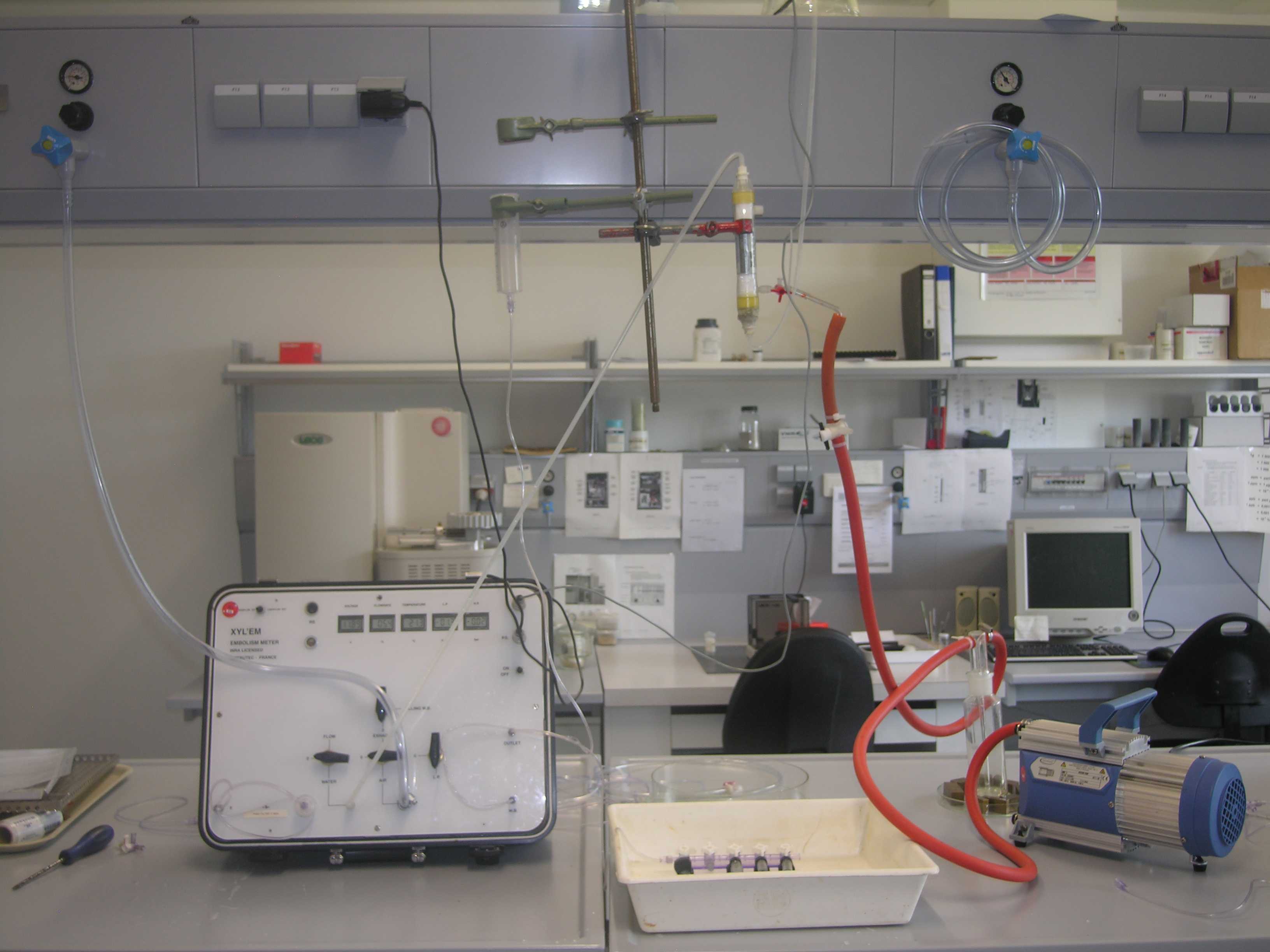
Biogas
4 x 10 L Batch-Fermenter as well as 4 x 10 L Fermenter for continous processing with
online measurement of the biogas and methane concentration.
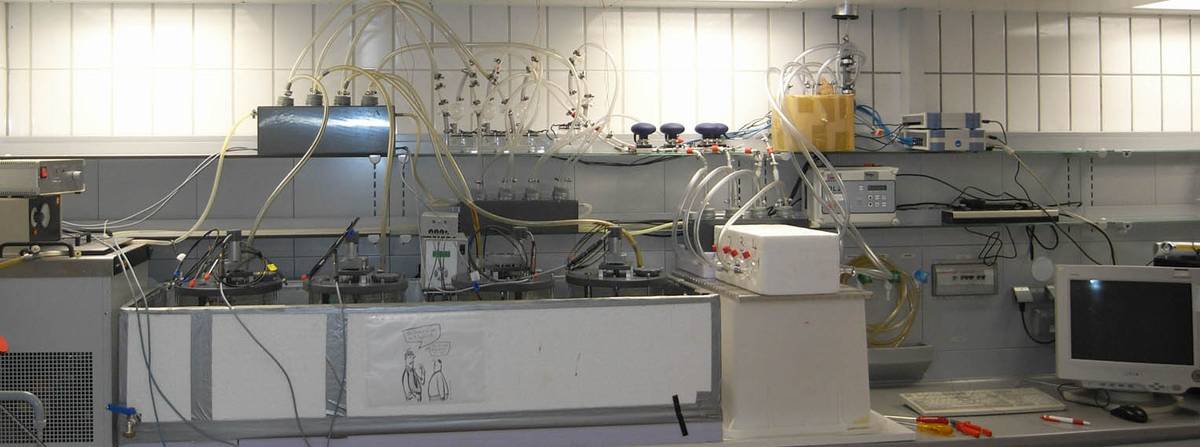
Microscopy
Stereo microscope (Zeiss Axio Zoom V16)
This state-of-the art microscope can be used to observe various samples in transmitted or incident light under a wide range of magnifications (up to 168 times). It is equipped with a fully automated motorized stage that enables to easily capture composed images in xy and z directions.
Light-, Fluorescence-, Phase microscope (LEICA DMRBE)
LEICA DMRBE represents a high quality light microscope equipped with 5x, 10x, 20x, 40x and 100x objectives. The microscope is equipped with external light source for fluorescence excitation and standard set of fluorescence filters and objectives. Observations in polarized light is also possible.
Critical point dryer (Polaron)
Critical point drying is a method for drying biological tissue without collapsing or deforming structural properties. Its major application is tissue preparation for scanning electron microscopy.

